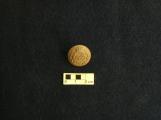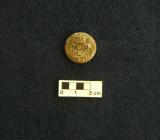1
Fort Henry Garrison Hospital: Medical Practices of the PastFrom almost the beginning of the modern British Army, an Army Medical Department existed. By the Colonial Period, three main branches of the organisation had evolved, including the Army Medical Staff and Garrison Hospitals. This branch was a department of the army, but first and foremost a medical institution. It had no attachment to any regiment, but rather was attached to the permanent hospitals that were established at the major colonies. General or Garrison hospitals were built in Halifax, Quebec, Montreal, Kingston and Toronto. They were staffed by hospital directors, physicians, surgeons, assistant surgeons, apothecaries and medical dispensers.
According to two Ordnance plans, the Fort Henry Garrison Hospital in Kingston was constructed during 1827 and 1828. Its purpose was to serve the artillery and infantry detachments barracked at Fort Henry. The hospital was situated some distance from the garrison barracks it served and was isolated from the surrounding community by a palisade and secured by a guardhouse, which controlled access to the grounds. A dead house (a morgue) was also located at the southeast corner of the compound.
While the Garrison Hospital treated many types of illnesses, when a soldier was admitted to the hospital, it was often for injuries sustained on a work fatigue or a seasonal illness. The most prevalent minor complaints included headache, sore throats, frostbite and hypothermia. More serious complaints were mainly fever, alcohol poisoning and tuberculosis. A common local seasonal illness often treated at the Garrison Hospital was a mild form of malaria caused by such a close proximity to the swamps of the Cataraqui River. The hospital also dealt with intentional injuries in the form of public punishment.
Upon a visit to the Garrison Hospital a physical examination would take place, which might include checking the pulse, percussion and auscultation (tapping the chest and abdomen), and sometimes the use of a stethoscope. If admitted, the soldier would be sent to one of the five wards on the second or third floors.
Treatment of disease would have relied upon medicines compounded at the hospital. The selection of drugs reflected the early 19th century preoccupation with the elimination of disease causing toxins; thus, laxatives, emetics, sudorifics, and bleeding appear frequently in medical reports from the Garrison Hospital. Surgery would have been limited to lacing and stitching open wounds. Standard procedure was that every soldier who died in the hospital from a suspected malignant cause was to be taken to the dead house for autopsy in order to further medical learning.
A specific example of treatment at the Garrison Hospital was during the cholera outbreak of 1832. At this time, patients of the 66th regiment were under the care of Dr. Walter Henry and assistant surgeons Drs. William Linton and Philip Anglin. Of approximately 650 men and 100 family members in the regiment, 36 suffered cases of cholera. All of these cases were likely treated at the Garrison Hospital. Those under the care of Dr. Henry were dosed with caster oil mixed with laudanum and were bled copiously, (which was a common treatment). In the end, five soldiers died, which translates to 0.06% of the military population compared to a devastating 5.0% of the civilian population of Kingston who died as a result of the cholera outbreak.
The British Military were withdrawn from Canada by 1870, after confederation in 1867, and the Garrison Hospital was adapted for use as barracks by the Canadian Militia. Ultimately, it was abandoned and remained so through the early 20th century. At some point the dead house was demolished, and the Department of Militia and Defence leased the hospital property to civilians who populated the shoreline with cottages. The hospital itself was destroyed by fire in 1924, leaving only gutted limestone walls behind as evidence of its former medical purpose.
Excerpted from:
Cataraqui Archaeological Research Foundation 02-07. Hospital Report Draft Dec 5, 2006.
Bazely, Susan M. "The Naval Cottages and Fort Henry Garrison Hospital: Public Archaeology at Two of Kingston's Military Sites", Fields of Fire: Fortified Works of Kingston Harbour, Ontario Archaeology No 76, 2006:33-53.
2
1827 Plan of Fort Henry Including the Garrison Hospital1827
Fort Henry Garrison Hospital, Kingston, Ontario, Canada
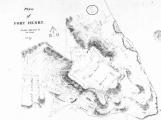 Credits:
Credits:National Map Collection 22957
3
1829 Plan Showing Fort Henry and the Garrison Hospital1829
Fort Henry Garrison Hospital, Kingston, Ontario, Canada
 Credits:
Credits:National Map Collection 11381
4
1829 Plan of Point Henry1829
Fort Henry Garrison Hospital, Kingston, Ontario, Canada
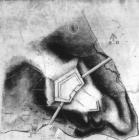 Credits:
Credits:National Map Collection 20780
5
1831 Plan of the Military Hospital at Point Henry, by the Royal Engineer Lt. Arthur Kay1831
Fort Henry Garrison Hospital, Kingston, Ontario, Canada
 Credits:
Credits:Fort Henry National Historic Site of Canada Archives
6
1832 Painting Showing the Garrison Hospital, by Lt. Charles Frederick Gibson of the 66th Regiment1832
Fort Henry Garrison Hospital, Kingston, Ontario, Canada
 Credits:
Credits:Royal Ontario Museum
7
1834 Painting of the Garrison Hospital, by Mrs. Harriet Cartwright1834
Fort Henry Garrison Hospital, Kingston, Ontario, Canada
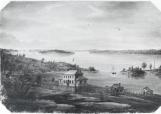 Credits:
Credits:Library and Archives Canada C-2754
8
Detail of a Map Showing the Garrison HospitalCirca 1858
Fort Henry Garrison Hospital, Kingston, Ontario, Canada
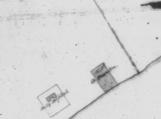 Credits:
Credits:National Map Collection 18864
9
Plan for the Repair of the Picket Fence Around the Garrison HospitalCirca 1858
Fort Henry Garrison Hospital, Kingston, Ontario, Canada
 Credits:
Credits:National Map Collection 4669
10
Fort Henry Latrine DrainCirca 19th Century
Fort Henry Garrison Hospital, Kingston, Ontario, Canada
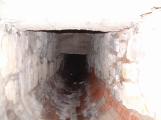
12
Rickett's Bottle with Post Bottom Mould19th Century
Fort Henry Garrison Hospital, Kingston, Ontario, Canada
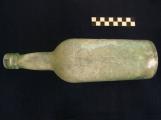
13
Wine Bottle Made in Rickett's Mould19th Century
Fort Henry Garrison Hospital, Kingston, Ontario, Canada
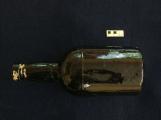
14
Gilt Officers' Button, 62nd RegimentCirca 1862-1863
Fort Henry Garrison Hospital, Kingston, Ontario, Canada
